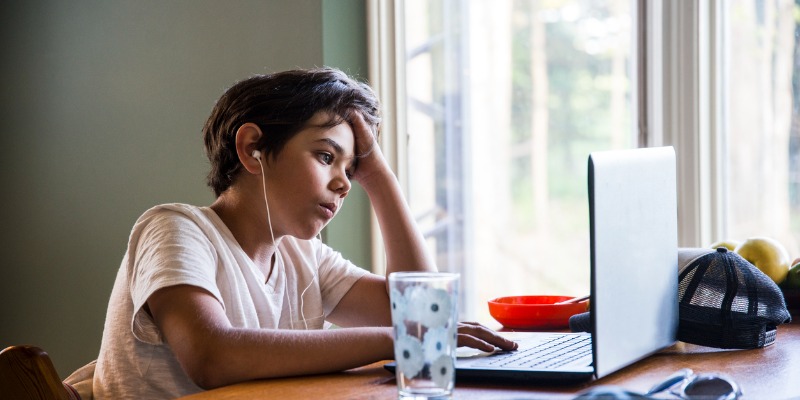COVID school closures dramatically set kids back—here are some solutions

More evidence is rolling in that COVID school closures set students back significantly, harming disadvantaged kids the most. To get back on track, Canadian kids need a scholastic “power-up” (to quote the countless kids who spent too much time out of class and at home playing video games). Without it, research shows they will make less money as adults, face greater inequality, and Canada’s economy will suffer.
Even the New York Times now acknowledges that COVID school closures set children’s progress (as measured by test scores) in math and reading back two decades, by citing researchers who say this educational gap may reduce the lifetime earnings of today’s kids and significantly hamper the economy.
Indeed, data modelling from the World Bank estimates a global toll of learning losses in the trillions of dollars and per-student reduced lifetime earnings in the tens of thousands of dollars, exacerbating inequality. In Canada, the evidence so far shows that student achievement has declined post-COVID, which is not surprising considering how often governments and education administrators closed schools during the pandemic. For example, schools were closed province-wide for 27 weeks in Ontario where the largest share of Canadian kids are educated (not including individual school closures).
Consequently, mental health suffering among kids in Canada reached crisis levels, screentime soared, and academics suffered greatly. According to research predating COVID-19, lost classroom time compounds student absenteeism and negatively impacts student achievement and social growth. Research from the British government shows that higher levels of school attendance contribute to better grades, increased wellbeing and overall development in both elementary and high school.
Clearly, we don’t want to subject Canadian children to living poorer lives in a worsened economy. So, what can we do now to mitigate COVID learning loss? Here are some things to consider.
First, kids must be in class more often.
Some education experts were already warning about lost classroom time before the pandemic. In Atlantic Canada, though not Canada’s coldest nor snowiest region, inclement weather days pile up and students regularly miss several weeks a year. When snow or rain falls, all provinces should pull up their boots and get their kids to school. When it’s truly impossible, according to noted education consultant Paul Bennett, schools should use the online learning capability gained during COVID so the learning continues rain (or snow) or shine.
But it’s not just inclement weather that interrupts learning. Labour union strikes keep kids out of school on a rolling basis across Canada. Today, some schools in Quebec are closed due to union strikes. In October, close to 100 per cent of Ontario’s English elementary teachers voted in favour of a strike—after teacher strikes in Ontario shut two million kids out of their classrooms in 2020. In Nova Scotia last spring, support staff strikes meant pre-primary kids and those with exceptional needs could not attend school. The vast majority of Canadian students, who are educated in government-run schools, shouldn’t have to accept this status quo. In charter schools and independent schools, where teachers are not required to join unions and pay dues, students largely avoid the learning loss associated with labour strife.
Second, quality teachers matter.
Union agreements hamper the ability of governments to hire and reward excellent teachers based on merit. Provinces should also ensure that teacher certification requirements aren’t preventing qualified people from becoming teachers.
Third, kids must learn facts with tried-and-true methods.
The swing toward “progressive” curriculum fads—history without facts, discovery math, reading without phonics—and away from memorization and content-rich learning, as we see in British Columbia’s new curriculum, makes it harder for kids to thrive. For kids, facts form the basis of knowledge, critical thinking and understanding. Curricular fads do not.
Finally, testing matters.
Standardized testing is on the decline across Canada. To help kids improve, we first must understand how they’re doing. Standardized testing is the only fair and objective way to measure student performance, and according to recent Leger polling data, the vast majority of Canadian parents of kids in K-12 schools support it.
Government school closures shortchanged our kids during COVID. A rigorous return to classroom learning, with trusted methods and empowered teachers, won’t solve this historic learning loss overnight. But it’s a good start.
Author:
Subscribe to the Fraser Institute
Get the latest news from the Fraser Institute on the latest research studies, news and events.

